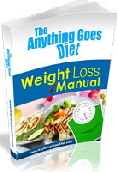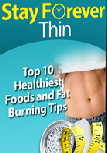
Know Facts
To Know Or Not To Know …




Iron
Iron is an essential trace element found in nearly all living organisms. In our body about 4 grams of iron is present.
Iron is a key component of important proteins including haemoglobin, myoglobin, and several enzymes, including iron catalase, iron peroxidase, and the cytochrome enzymes, which perform important oxidation and reduction processes.
Almost two thirds of the body's iron is found in haemoglobin in the red blood cells, which transport oxygen from the lungs to all other tissues in the body. About a quarter of the body's iron is stored as ferritin or haemosiderin.
The remaining iron is in the muscles’ myoglobin, which stores and distributes oxygen necessary for muscular activity, and in the enzymes mentioned above.
Sources
Iron is pervasive, but particularly rich sources of dietary iron are red meat, lentils,
beans, poultry, fish, leaf vegetables, watercress, tofu, chickpeas, black-
Iron in low amounts is found in molasses, teff and farina. Iron in meat is more easily absorbed than iron in vegetables.
Daily intake
The Recommended Dietary Allowance (RDA) for iron varies considerably with age, gender,
and source of dietary iron (heme-
In adult females before menopause 18 mg/day is recommended. The recommended additional intake is 27 mg/day during pregnancy and 9 mg/day during breast feeding. In adult males and in females after the menopause 8 mg/day is recommended.
Infants may require iron supplements if they are bottle-
The tolerable upper limit for iron is 40 mg/day for children and 45 mg/day for adults. This limit is set as the largest amount of iron a person can consume long term without risk of negative side effects.
However, if you are deficient in iron, larger amounts (about 100 mg/day) may be taken until the deficiency has been corrected.
Absorption of iron may be enhanced by being taken together with vitamin C (ascorbic acid). Here is a list of foods having the highest content of iron.
Deficiency
Deficiency can develop from bleeding including excessive menstrual bleeding, bleeding from the gastrointestinal tract (ulcers, hemorrhoids, etc.), and from blood donation.
It can also be a consequence of  inadequate intake (e.g. a vegetarian diet), or of
substances in the diet interfering with iron absorption like phytate, especially
in bran and seeds.
inadequate intake (e.g. a vegetarian diet), or of
substances in the diet interfering with iron absorption like phytate, especially
in bran and seeds.
The main manifestation of iron deficiency is anaemia with symptoms like fatigue, dizziness and pallor. Other symptoms of iron deficiency are hair loss, brittle or grooved nails, irritability and weakness.
In the United States 20% of all women of childbearing age suffer from iron deficiency.
Excess
Because intestinal absorption of iron is regulated by iron stores, iron toxicity is rare. Consuming large quantities of alcohol may increase the absorption of iron.
Once iron is absorbed it is only excreted through blood loss. Excess iron will build up in tissues and organs and may increase the risk for certain cancers and eventually lead to death.
Acute iron intoxication may occur with intakes above 20 mg/kg body weight. The lethal dose is 60 mg/kg body weight. Excess iron damages especially the heart and liver. The medical management of iron toxicity is deferoxamine which binds and expels excess iron from the body.
The main concern with iron toxicity is overdoses in children. It is important to keep iron supplements away from children and tightly closed.
Copyright: Know Facts -